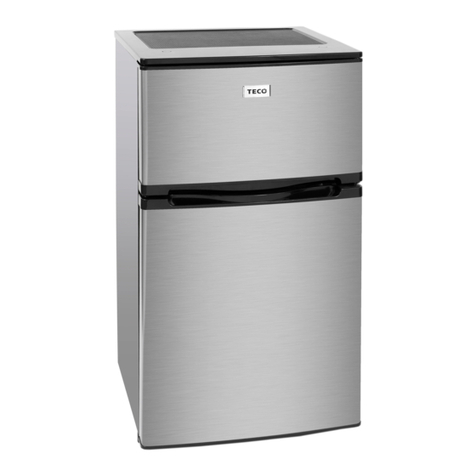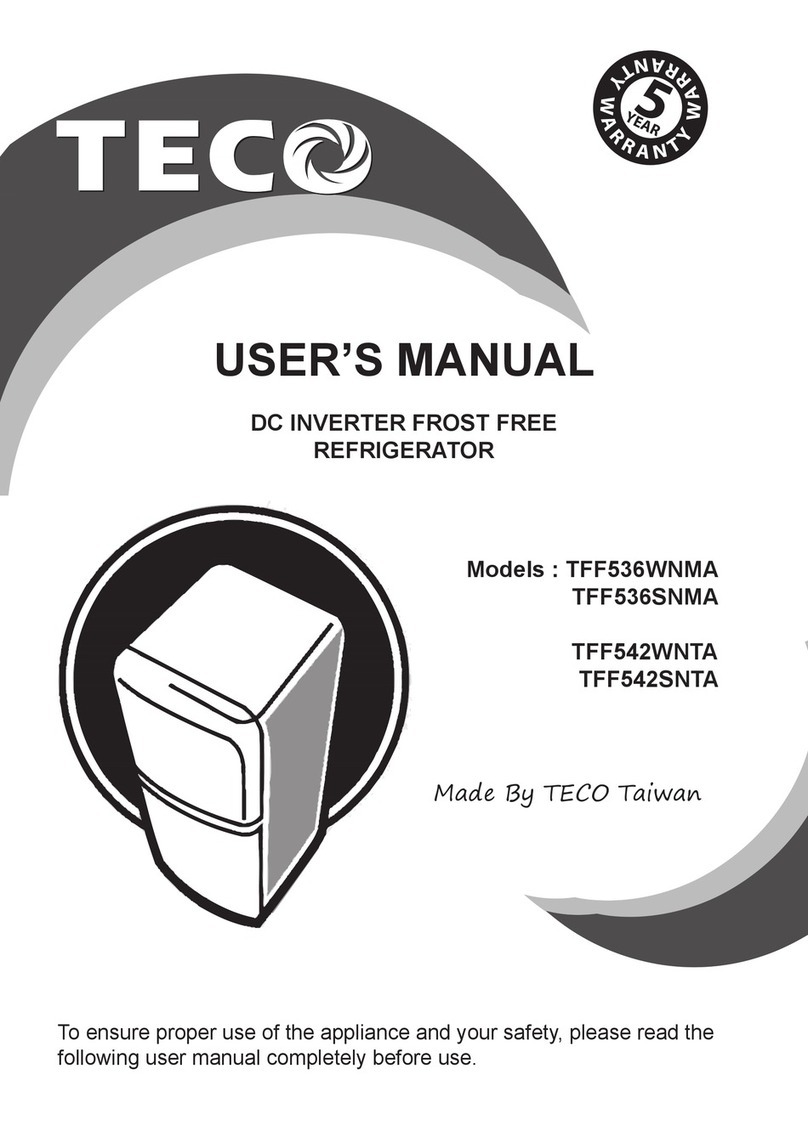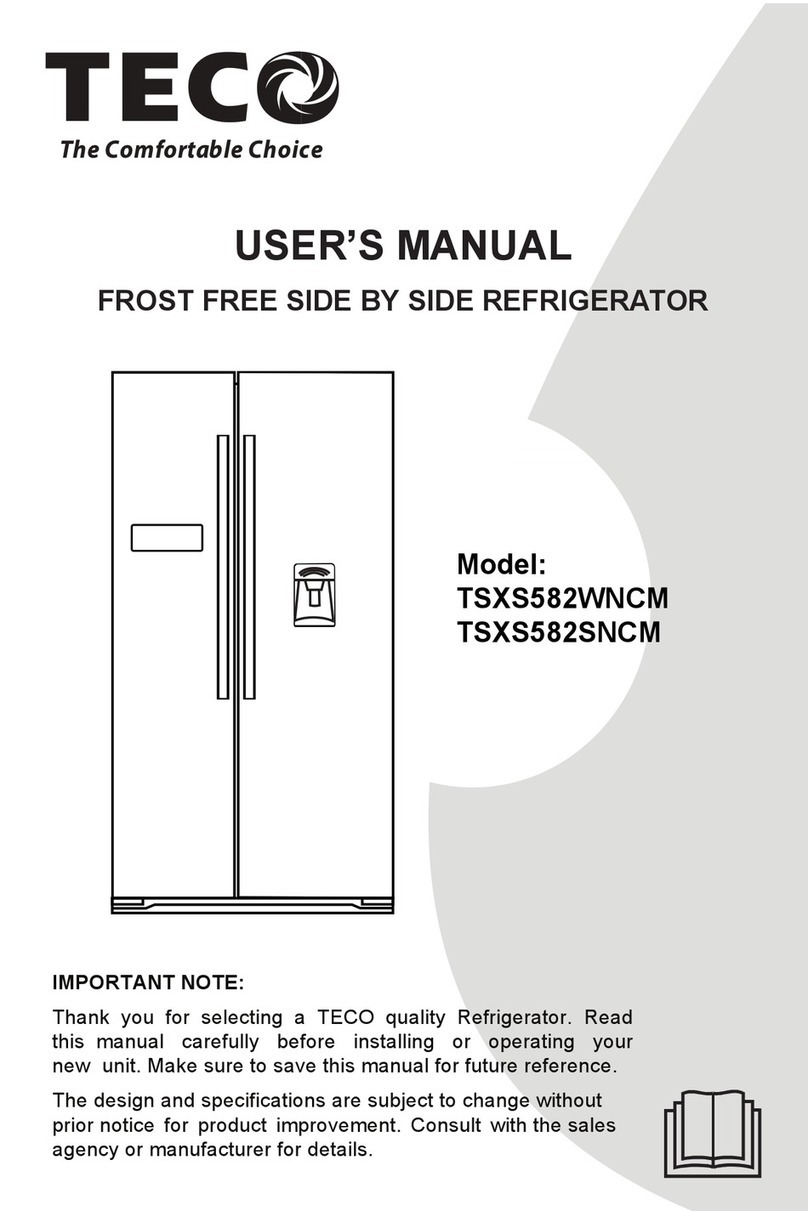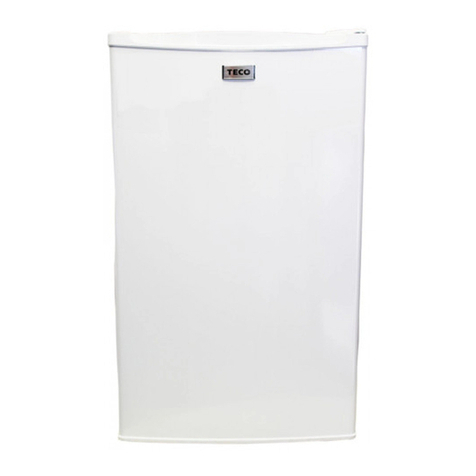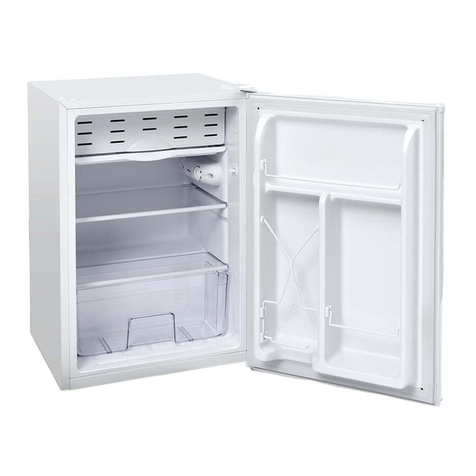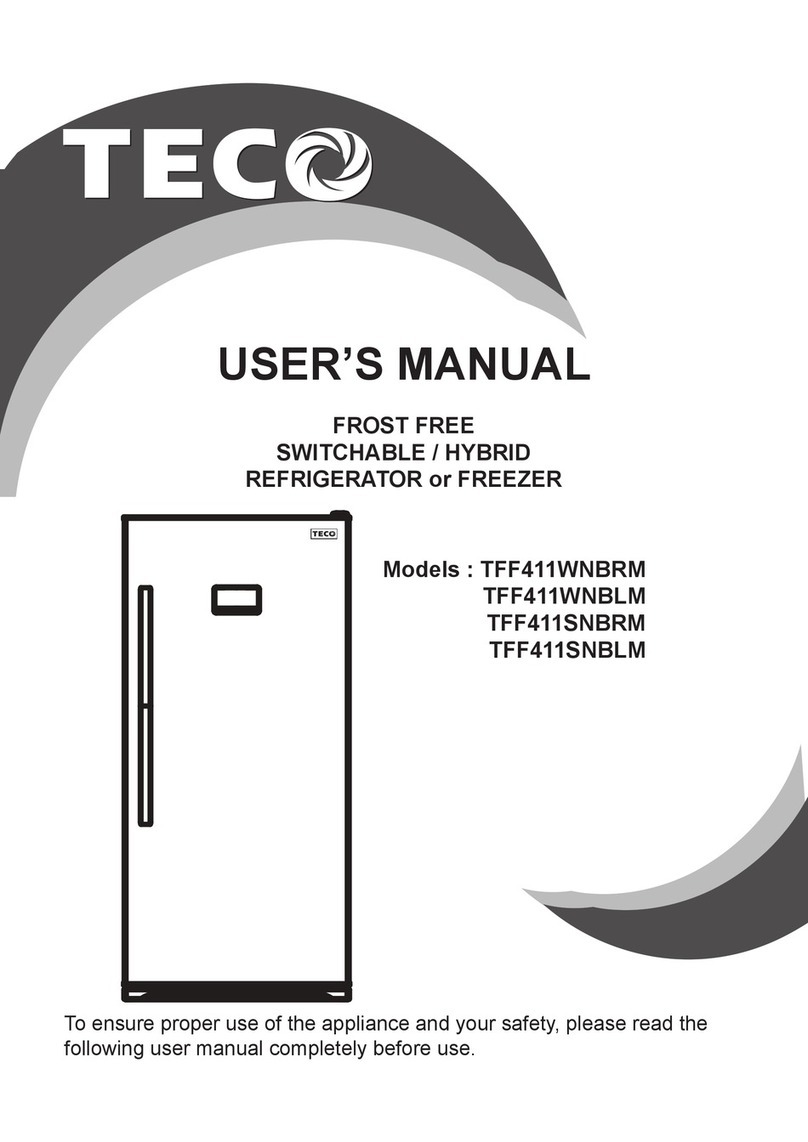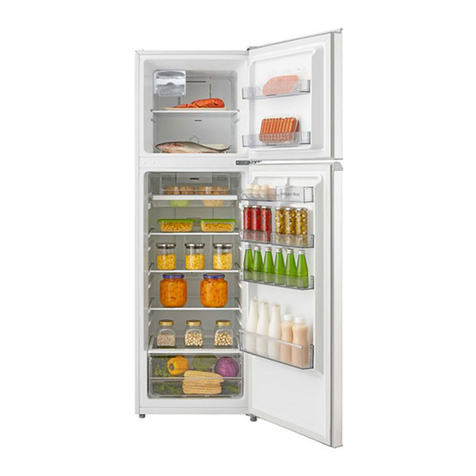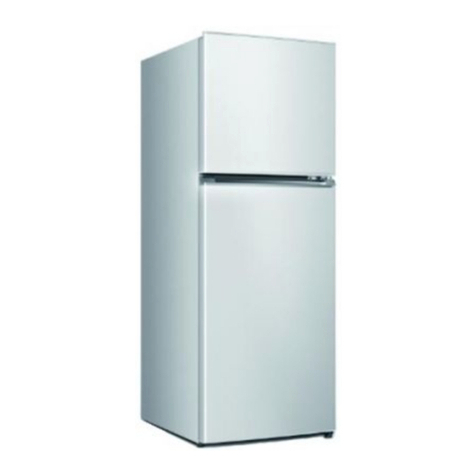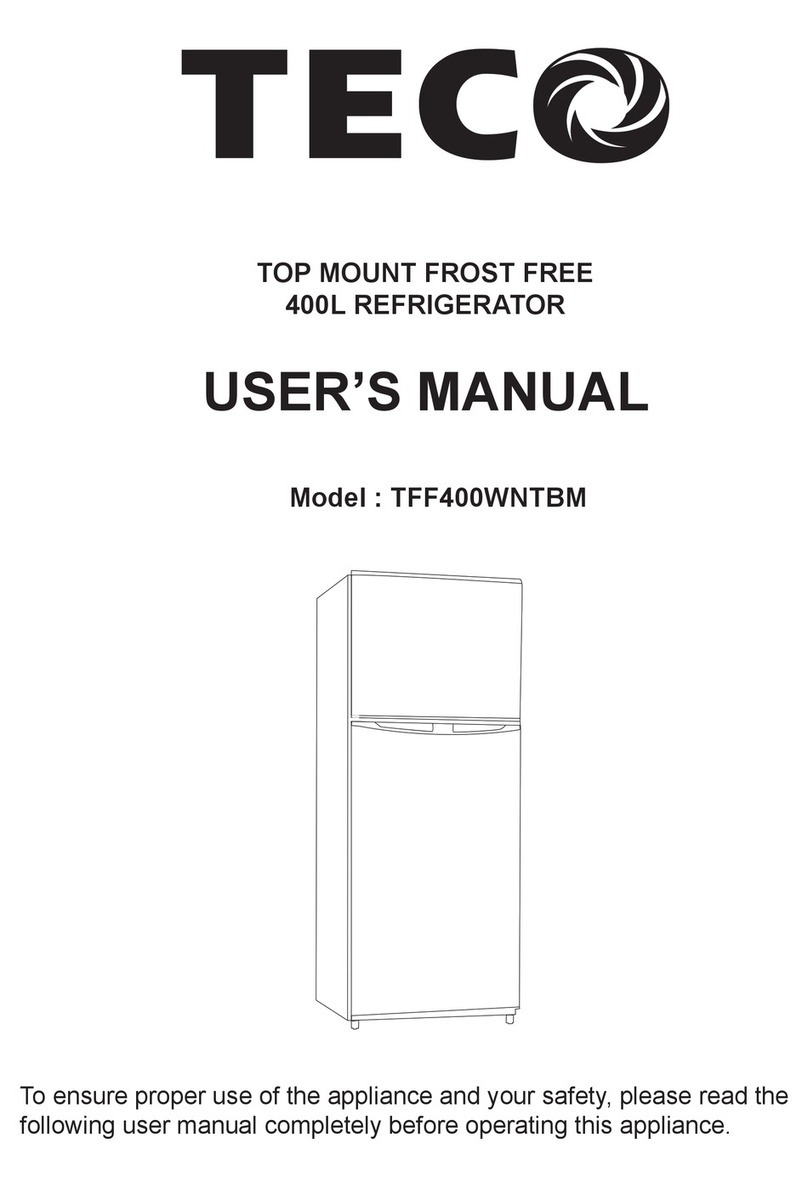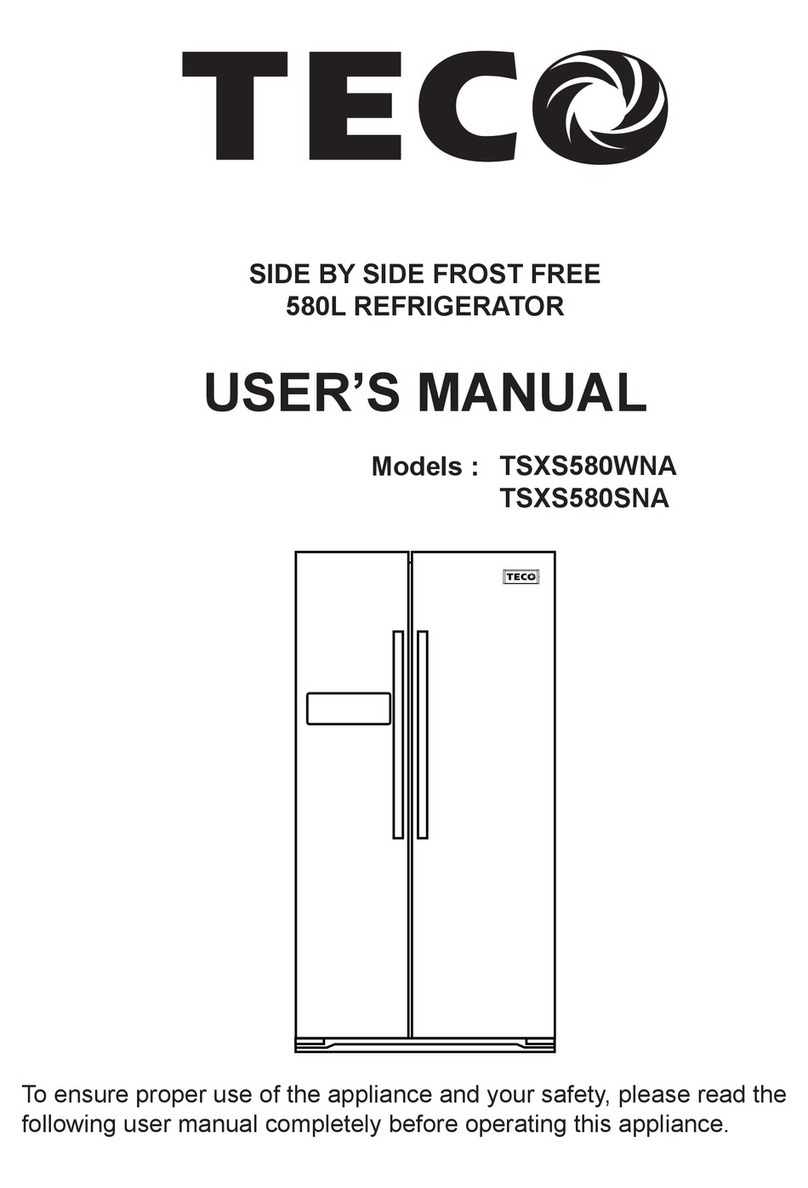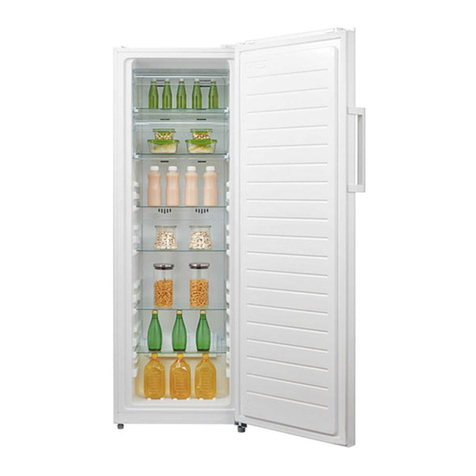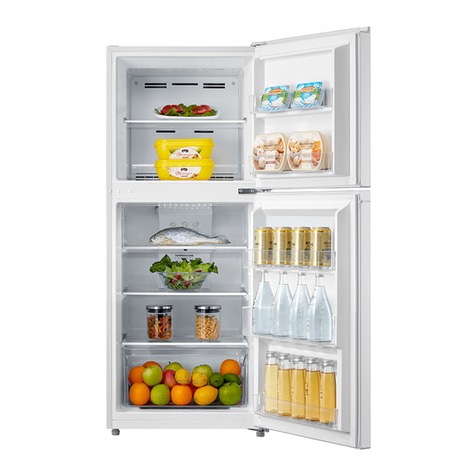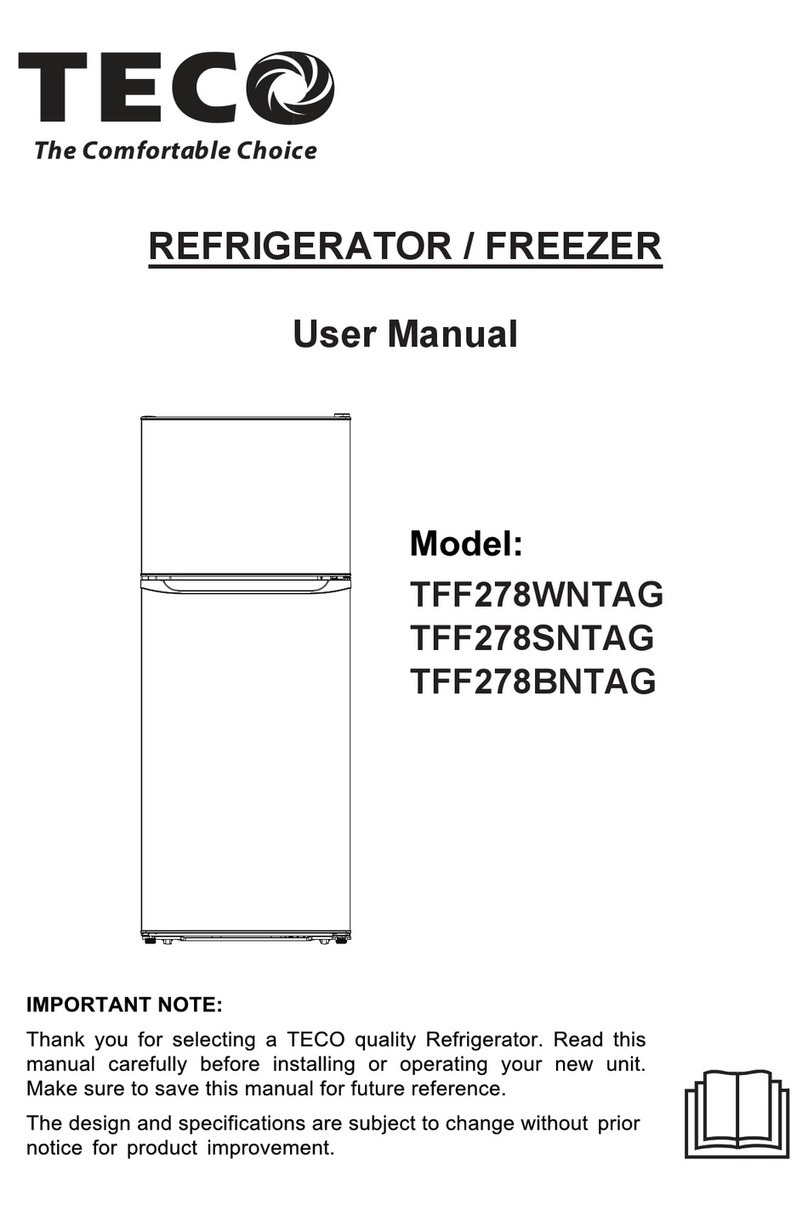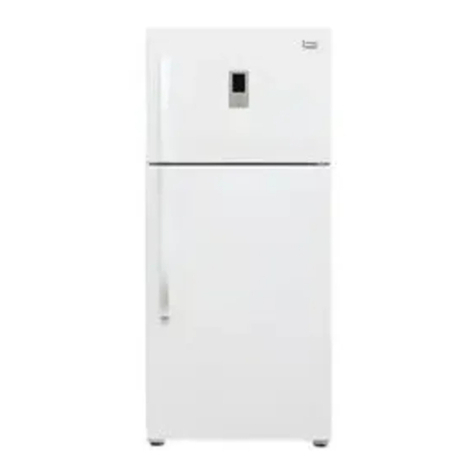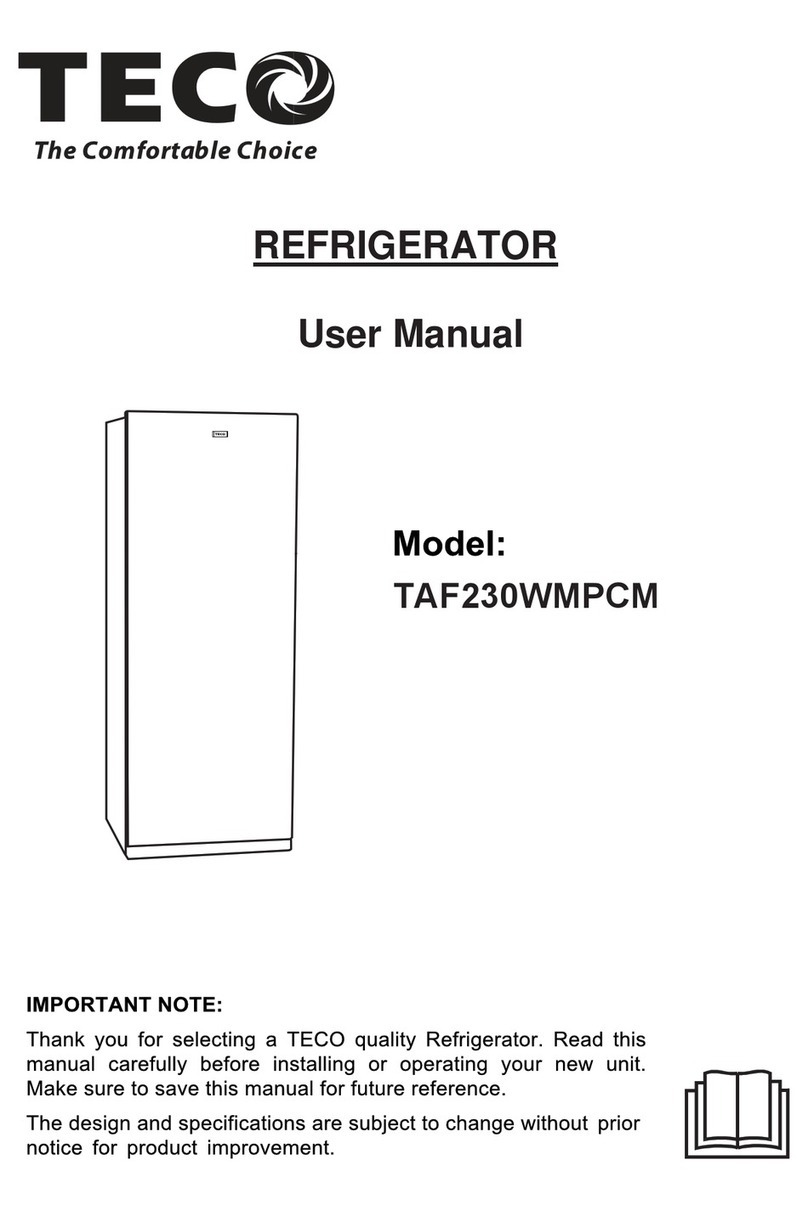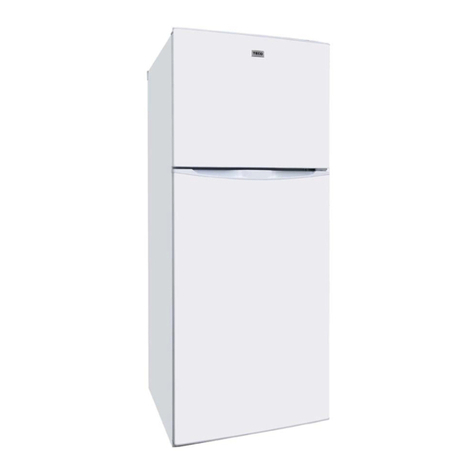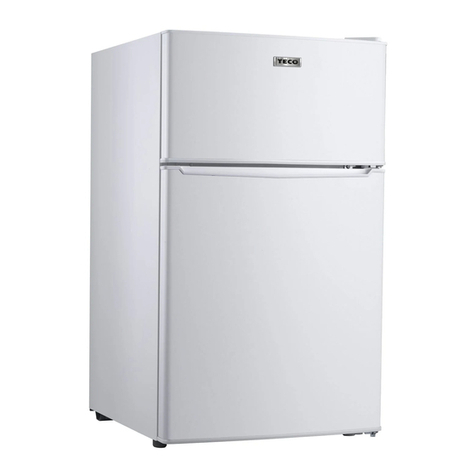
4
R600a Isobutane Refrigerant
Hydrocarbon refrigerants have excellent refrigerant
properties and minimal low global warming potential and
no ozone depletion potential.
This appliance contains a small quantity of flammable, non-
synthetic R600a refrigerant:
Hydrocarbon refrigerants cannot be ‘retrofitted’ to the appliance
that has not been designed and approved to use that type of
refrigerant.
Ensure that the tubing of the refrigerant circuit is not damaged
during transportation and installation.
Leaking refrigerant may cause eye injuries or could ignite.
The room for installing the appliance must be at least 1m3per 8g
of refrigerant. The amount of refrigerant in the appliance can be
found on the rating plate attached to the appliance.
Risk of fire
If the refrigerant circuit should become damaged. Avoid open
flames and sources of ignition. Disconnect the appliance from the
mains power. Thoroughly ventilate the room in which the
appliance is situated for several minutes.
SAFETY INFORMATION
•The refrigerator is designed to operate on a single phase power
supply within a voltage range of 220~240V/50Hz.
• The refrigeration system contains refrigerant. Do not allow any
sharp objects to come in contact with the refrigerant system to
avoid damage the refrigerant circuit.
• This product is for indoor use only.
• Do not place electrical items or cooking equipment nearby.
Keep away from substances which could cause ignition and good
ventilation shall be always maintained.
• Do not place objects on top of the appliance which are magnetic,
heavy or filled with water.
• If the supply cord is damaged, it must be replaced by authorised
TECO service personal, service agent or similarly qualified persons
in order to avoid a hazard.
• Do not store flammable, explosive, volatile and highly corrosive
materials in the refrigerator. Containers with flammable gases or
liquids can leak at low temperature. There is a risk of explosion or fire.
WARNING
WARNING

